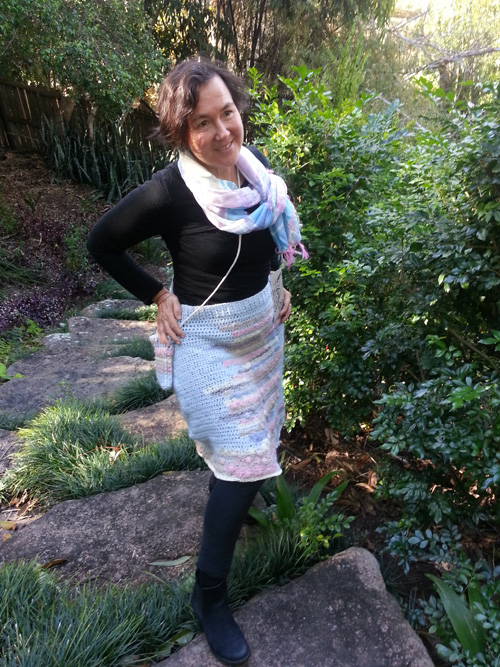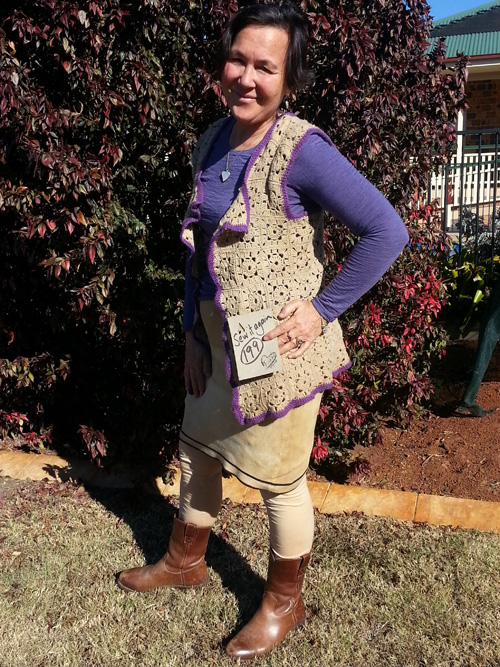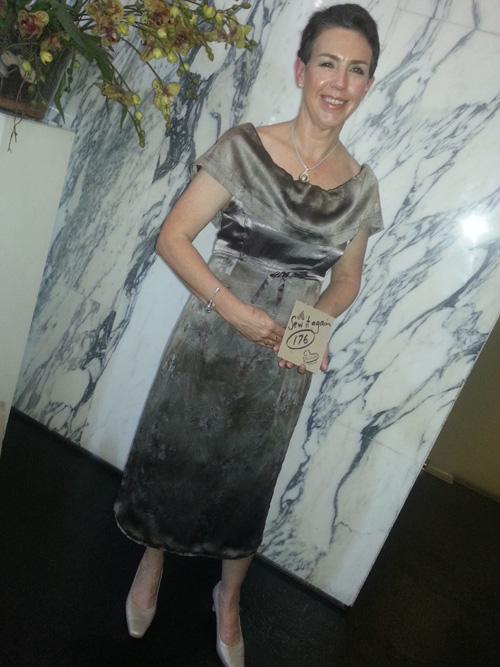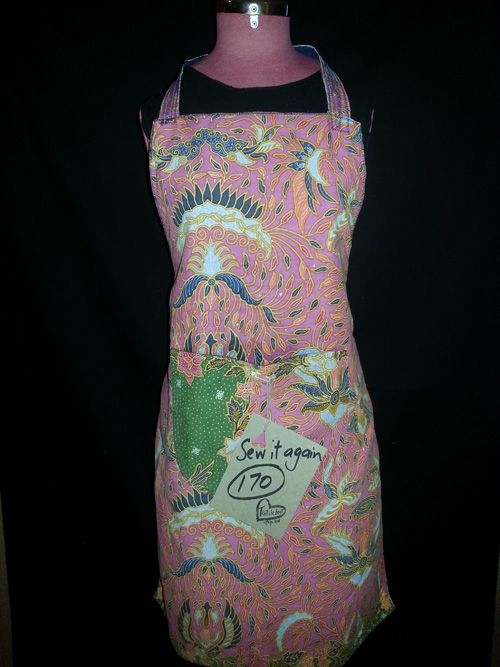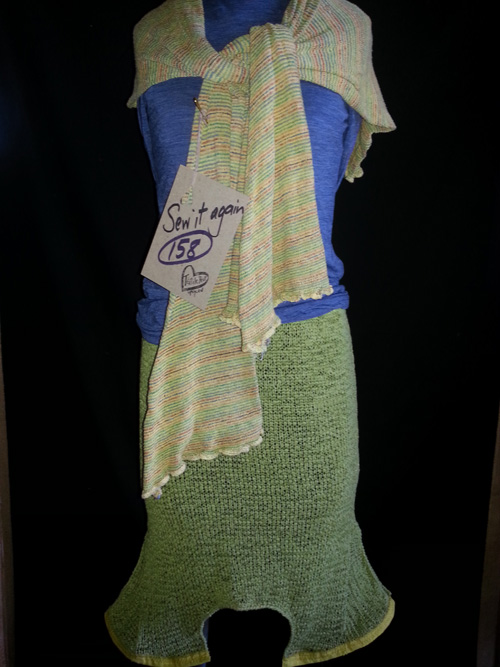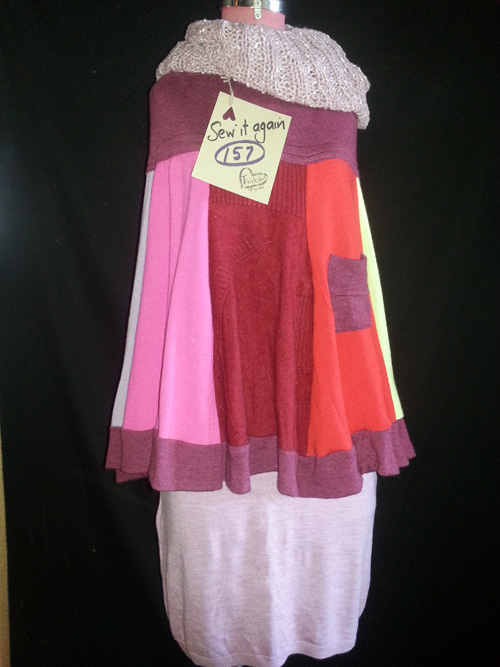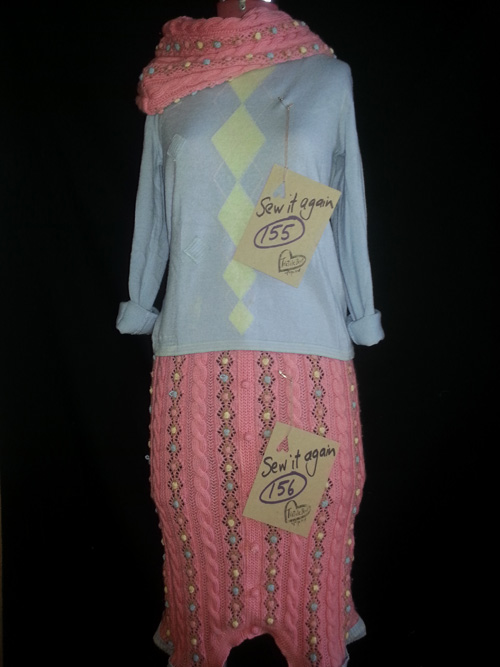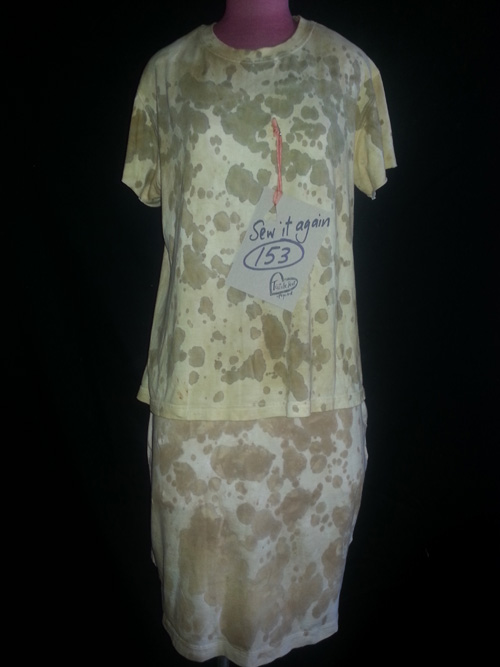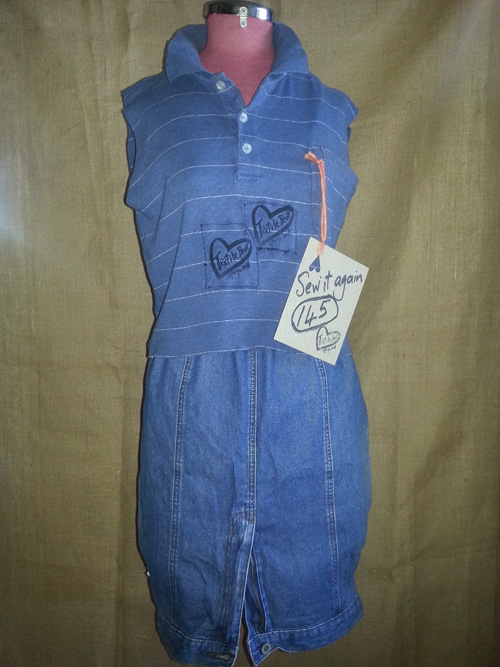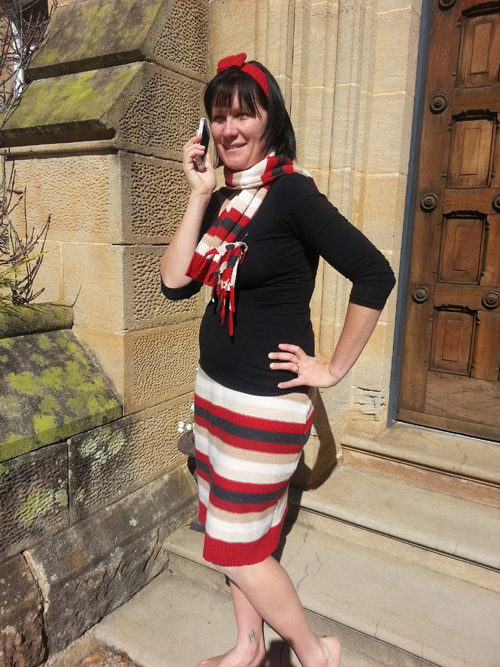 This was an ordinary old cotton jumper that Helen transformed into a skirt, scarf, toggle and headband at the Textile Beat jumper-to-skirt workshop – and Desirea modelled at the gorgeous Abbey of the Roses in Warwick, Queensland.
This was an ordinary old cotton jumper that Helen transformed into a skirt, scarf, toggle and headband at the Textile Beat jumper-to-skirt workshop – and Desirea modelled at the gorgeous Abbey of the Roses in Warwick, Queensland.
Cotton farmers are paid about $500/bale (which is 227kg) for raw cotton or about $2/kg for the cotton in a standard jumper which weighs less than 500 gms. A lot of water, energy and other inputs (insect control, defoliant) go into producing this natural fibre. After being grown on farms, the fibres then go through ginning, spinning, colouring, knitting to turn it into garments which we buy so easily and cheaply in clothing stores because they are made en mass. Billions and billions of such garments are produced every year to clothe the world. Continue reading
